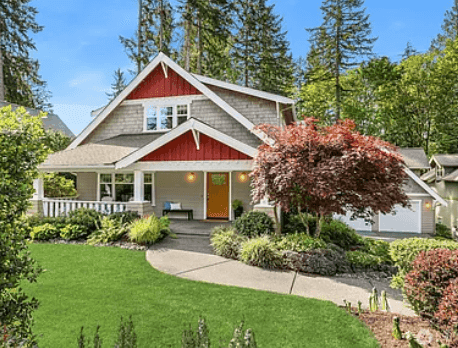
If you’re considering buying a home, you may have heard about a financing option called a 3-2-1 buydown. This is a mortgage strategy that can help ease your monthly payments at the beginning of your loan term. Understanding how a 3-2-1 buydown works can be crucial for buyers and sellers alike, as it can significantly affect the overall cost and affordability of a home.
A 3-2-1 buydown allows a buyer to pay a lower interest rate for the first three years of their mortgage. Specifically, in the first year, the interest rate is reduced by 3%, in the second year, it’s reduced by 2%, and in the third year, it’s reduced by 1%. After the third year, the mortgage returns to the original interest rate. This strategy can make homeownership more affordable for those who may be stretching their budget to buy a home or who expect their income to increase in the coming years.
To understand the costs associated with a 3-2-1 buydown, let’s break it down. For simplicity, let’s say you are looking at a $300,000 mortgage with a 6% original interest rate. In the first year, your interest rate would be effectively 3% (6% - 3%). If you only had to pay interest based on this lower rate, your monthly payment would be significantly less than it would be at the original rate.
Calculating the specific savings for the first year can be done by looking at the monthly payment amounts for both rates. At 3%, your monthly payment for principal and interest would be around $1,265. At the original rate of 6%, it would jump up to about $1,799. This means, in the first year of the buydown, you could save approximately $534 per month. Over the entire year, that could lead to total savings of about $6,408.
In the second year, the rate increases to 4% (6% - 2%). Your monthly payment would now be around $1,432, still offering substantial savings compared to the original rate. This continues to make homeownership more manageable, especially for those who may not have the expected income to cover the full payment at the start.
The third year sees the interest rate return to 5% (6% - 1%). At this point, your payment would be roughly $1,610 per month, which is higher than in the previous years but still lower than the full payment amount. After the third year, when the mortgage returns to the original 6% interest rate, your payment would be $1,799 again.
Now, let’s discuss who pays for the 3-2-1 buydown. In many cases, the seller covers the cost of the buydown as a way to make the home more attractive to buyers. This can be beneficial for sellers in a competitive market, as it may help their home stand out and sell more quickly.
For example, if the seller agrees to finance a 3-2-1 buydown, they would pay the upfront cost associated with reducing the interest rate for the first three years. This is usually calculated based on the loan amount and the difference in interest payments during those three years. While this might seem like an expense for the seller, it can lead to a quicker sale and potentially a better return on investment in the long run.
Let’s take a closer look at the costs involved. The seller would need to provide enough funds to cover the difference in payments between the buydown rate and the original rate for the first three years. This is often calculated as a present value of future savings and may involve some detailed calculations. It’s important for both buyers and sellers to understand these numbers, as they can greatly impact their financial situations.
As you navigate the terrain of buying or selling a home with a 3-2-1 buydown, understanding the potential financial implications is critical. Buyers should carefully consider their long-term financial situation and how comfortable they are with their payment increasing after the first three years. Will your income likely increase during this time, allowing you to handle the higher payments? Or are you planning to refinance before the rate returns to original levels? These are questions worth considering.
Similarly, sellers need to weigh the pros and cons of offering a buydown as an incentive. While it can help sell a home, it also represents a financial commitment that needs to be evaluated in the context of the overall sale price. How much are you willing to invest to make your home appealing? Will it lead to a quicker sale at a price that meets your expectations?
When considering a 3-2-1 buydown, it’s beneficial for both parties to communicate openly. Buyers should express their needs, while sellers should clearly understand how they can meet these needs in a way that is financially feasible for them.
Also, keep in mind that a 3-2-1 buydown is not the only option available when it comes to financing. There are other types of buydowns and financing strategies that might be better suited for your specific situation. Factors such as your credit score, the type of loan, and the housing market conditions can all influence your mortgage options.
If you are looking to understand how a 3-2-1 buydown can work for you or if you are considering selling your home and want to know how to make it attractive to buyers, it’s important to have a detailed conversation with a knowledgeable mortgage professional. They can help you analyze your options and figure out what will work best given your unique circumstances.
Understanding the nuances of a 3-2-1 buydown is crucial for both buyers and sellers. It’s a tool that can lead to significant financial benefits if used correctly. Whether you’re looking to buy your first home or sell a property, this financing option can help make the process smoother and more affordable.
If you have any questions or would like to discuss your specific needs, don’t hesitate to reach out.


President, Founder
Nation's Mortgage Bank | NMLS: 309431